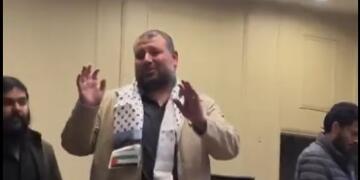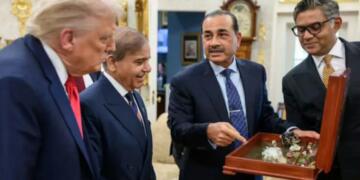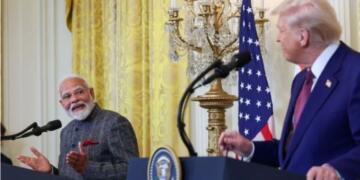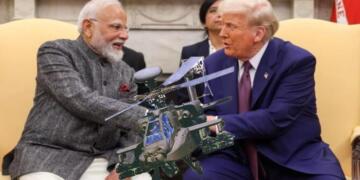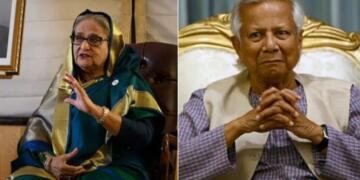Despite the image of Rashtriya Swayamsevak Sangh as the ‘Hydra’ in Indian politics among the Sangh’s critics, it seems they are woefully ignorant about Sangh’s inner-culture, ideology and philosophy. As a result, the criticism leveled against the Sangh often comes out as rather crude, repetitive rhetoric based on heresy rather than a genuine critique emanating from its ideological or philosophical contradictions, as any organization or philosophy is not without its deficiencies. Sangh’s perceived ‘evilness’ is often held up as ‘self-evident’ truth, negating any need for further investigation into the ontological and epistemological nuances of the Organization’s beliefs. This ad nauseum criticism has resulted in multiple myths being perpetuated as the core-beliefs of the Sangh hindering the prospects of better understanding of one of the largest volunteer organization’s in the world.
This fantastical ignorance, or deliberate manipulation, was on display in the plethora of op-eds that appeared in various publications leading up to former President Pranab Mukherjee’s visit to RSS headquarters in Nagpur to address the graduating Pracharks in the ceremony of ‘Tritiya Varsha Sangh Shiksha Varg’. The self-professed ‘experts’ on Sangh went livid on the news of the former President accepting an invite to visit the sanctum-sanctorum of their favorite Bogeyman’s shrine. After the barely disguised disgust somewhat receded, the ‘intelligentsia, as it is wont to do, started grappling at straws to find a rationale to this seemingly ‘world-ending’ event. There has to be something else, some hidden-agenda, some real-politik behind this, the ‘intelligentsia’ was not ready to accept that the former President would be interacting and sharing dais with an Organization long termed as ‘Fascist’ and ‘untouchable’ by the vast majority of the fourth pillar. Hence, the thread-bare conspiracy theories were born.
The most commonly peddled and arguably the most absurd conspiracy theory regarding the concealed motive of the visit seems to be a product of a furtive imagination over-stuffed with the plot-lines of an Indianized ‘West Wing’. The first part of the theory dutifully parrots the repetitive ‘belief’ that Sangh is unhappy with the functioning of Modi government. The new addition to this theory that has been doing the rounds, in some form or other, since 2014, that this time Sangh wanted to send a clear signal to Modi-Shah duo regarding its discontent to their style of functioning. The ‘smoking gun’ for this discontent, according to the conspiracy theorists, is Modi’s globalist outlook which is reflected in his policies, is radically different from Sangh’s ‘Swadeshi’ mantra. Firstly, and this is important to the second aspect of the conspiracy theory as well, discontent or dissatisfaction cannot be equated to radical divergence or schism, as the conspiracy theorists would like to believe. Secondly, RSS has repeatedly asserted that it is not anti-Globalisation. It is against undermining the indigenous capabilities and National interest at the altar of globalization. During the ‘Rashtroday Sammelan’ held in Meerut in February this year, Sarsanghchalak Shri Mohan Bhagwat reiterated the stand of the Sangh with regard to Globalization, stating “Good things from Globalization should be accepted.” At best, Sangh’s stance can be categorized as a ‘cautious globalist’ but to term it as ‘anti-globalist’ cannot be justified with any stretch of imagination. This view of the RSS is reflected in the policies of the government. While PM Modi has courted globalization, he has also remained steadfast supporter of ‘Make in India’ campaign, one of the key policy objectives of his government. So, the charge of radical divergence of PM Modi’s and that of RSS’ views is absurd and does not hold water amidst a closer inspection and is certainly borne out of either willful ignorance or desperate manipulation of Sangh’s ideological leanings.
The second aspect of the conspiracy theory states that Sangh is miffed with BJP President Amit Shah and PM Modi’s disregard to the NDA allies and hence, in the event of absence of clear majority to the BJP in 2019, Sangh would not be averse to the idea of a third front or NDA-led government without Modi-Shah duo. The significance of Pranab Mukherjee’s visit lies in the Sangh’s attempt to prop up a consensus candidate, so states the theory. Again, the charge ignores the political realities and not to mention the relationship of Sangh with Modi and Shah. Amit Shah, as the BJP President, has courted regional allies and has successfully forged such alliances post-2014 elections. Alliance in Goa, North-East Democratic Alliance with more than ten regional parties coming together with the BJP and other such alliances are testament to Amit Shah’s success at forging and retaining regional partners. BJP’s commitment to retaining allies, contrary to the charge, is such that despite crisis after crisis, it has maintained to retain perhaps the most unlikely partner, PDP, within the fold of the NDA. This demonstrates Amit Shah’s relentless pursuit for new alliances and a dogged commitment to retain such partners.
One of the glaring lacunae of ‘leftist-liberal’ ‘intelligentsia’ when it comes to analyzing the relationship between the Sangh and Modi is the myopic vision and distorted lens through which these elements look at RSS and its internal culture. The relationship, as perceived by the ‘intelligentsia’, is often depicted as that of a political lobbying group (akin to the NRA of USA) and a favorable dispensation. Any analysis borne out of this prejudiced, Western-centric vision is bound to be faulty and misleading. The relationship between the Sangh and a Pracharak (PM Modi, above everything else, is a Pracharak) is deeply rooted within the ‘Gurukul and Shishya’ tradition of ancient India. The ‘Gurukul’ prepares the Shishya for whatever path he wishes to choose in his life. The role of the ‘Gurukul’ in a Pracharak’s life is that of a sage counsel which reminds the Shishya to stay on the course of Dharma. If any deviation from the path of Dharma is evident, the ‘Gurukul’ would not disown the disciple but counsel it for course-correction. In the case of Sangh and PM Modi, Sangh’s role is to guide the Modi-led government to stay on course of Rajdharma. It is clear that RSS and PM Modi’s vision of India is complementary to each other and not at odds as the ‘intelligentsia’ would like to believe. RSS might nudge its favorite Pracharak for course-correction from time to time but there is absolutely no question it would plot against him or seek an alternative to his leadership. The absurd notion of RSS abandoning PM Modi for the sake of political power is the product of ignorance and deliberate manipulation of its culture and ideology.
The simple truth behind Pranab Mukherjee’s visit to Nagpur is that, contrary to the myths, RSS does engage with people of varied ideological bents and the good personal rapport the former President and Sarsanghchalak share contributed to the two of them coming together. To the disappointment of the ‘intelligentsia’, there is no ‘House of Cards’ or ‘Manchurian Candidate’ plotline playing out in the background


